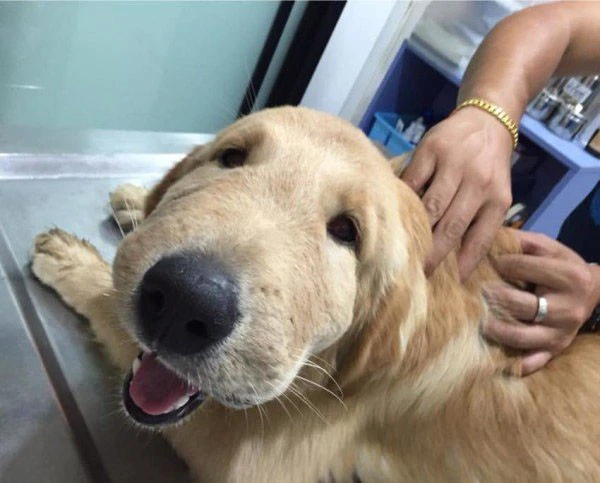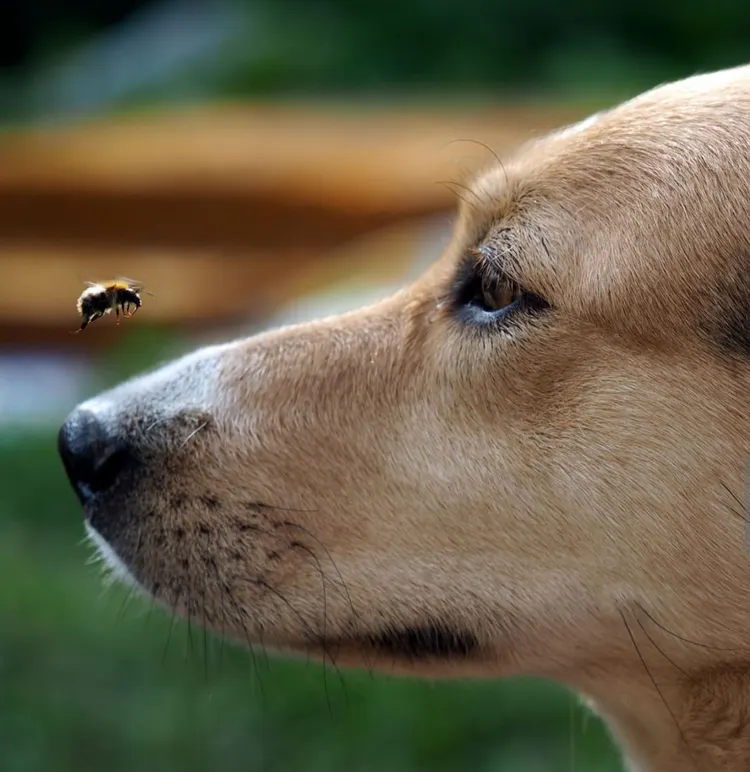Dogs are curious by nature—so it’s not surprising when a buzzing bee becomes their next snack. If you’ve ever watched your dog chasing after a bee, only to end up munching on one, you may have panicked at the thought of stings, swelling, or worse. But what really happens when your dog eats a bee, and how should you respond?
In this post, we’ll walk you through the essential steps to take if your dog eats or is stung by a bee, including recognizing signs of allergic reactions, when to seek emergency care, and how to manage mild symptoms at home. As eco-conscious pet owners, we’ll also explore natural remedies and preventive measures to help keep your dog safe.
What Happens When a Dog Eats a Bee?
When a dog eats a bee, the outcome can vary based on whether the bee stung the dog and where it occurred (e.g., inside the mouth or throat). Here’s what could happen:
- No Reaction: Sometimes, if the bee didn’t sting your dog before being swallowed, your dog might show no signs of distress. In this case, the bee simply passes through the digestive system without causing harm.
- Mild Digestive Discomfort: If your dog did swallow the bee, it could cause mild stomach upset, such as vomiting or diarrhea, as the insect’s body passes through the system. This may not be severe, but it’s important to monitor your dog for signs of discomfort.
- Allergic Reactions from Stings: If the bee stings the dog, especially inside the mouth or throat, the consequences can be more serious. A bee sting in these sensitive areas can lead to swelling, and in rare cases, the throat may swell enough to cause breathing difficulties, which can become a medical emergency.
Risks of Bee Stings Inside the Mouth or Throat
If a bee stings your dog’s mouth or throat, it can cause localized swelling. If the swelling becomes severe, it may block the airway, making it difficult for your dog to breathe. The throat, tongue, and face are sensitive areas where swelling can escalate quickly, potentially requiring urgent veterinary care. This is why it’s important to monitor your dog closely after any bee-related incident.
Symptoms to Watch For
When a dog eats a bee or is stung by one, it’s crucial to keep an eye out for symptoms, which may indicate an allergic reaction or other health concerns. The most common signs to watch for include:
- Swelling: Look for swelling around the mouth, face, throat, or anywhere your dog might have been stung.
- Vomiting or Diarrhea: If the bee was swallowed and your dog is experiencing gastrointestinal discomfort, vomiting or diarrhea may occur.
- Difficulty Breathing: If swelling occurs in the throat, it may affect your dog’s ability to breathe properly. This is a medical emergency and requires immediate attention.
- Lethargy: A dog that becomes unusually tired or unresponsive after a bee sting may be experiencing a more severe allergic reaction.
- Signs of Shock: Pale gums, rapid breathing, or collapse are indications of shock, a potentially life-threatening reaction to an insect sting.
If your dog exhibits any of these symptoms, particularly difficulty breathing or swelling in sensitive areas, it’s critical to act quickly.
What to Do Immediately
When your dog eats a bee, the first step is to stay calm. Panicking can make it harder to assess the situation, and your dog may pick up on your stress, leading to further anxiety. Once calm, take these immediate actions:
- Monitor Your Dog: Keep an eye on your dog for any initial signs of a reaction. Look for swelling, vomiting, or changes in breathing. If your dog shows no signs of distress, they may pass the bee without issue.
- Use Antihistamines (if prescribed): If your dog has a history of bee stings or allergic reactions, your vet may have prescribed an antihistamine, such as Benadryl. Administer the dose as recommended by your veterinarian to help reduce any swelling or allergic reactions. Never give your dog any medication without consulting a vet first, as the wrong dosage or drug could worsen the situation.
- Keep Emergency Vet Numbers Handy: If your dog begins showing signs of a severe reaction, such as difficulty breathing or extreme swelling, contact your vet or an emergency animal hospital immediately. Time is of the essence in these cases.
When to Go to the Vet
While not every bee sting or bee-eating incident requires a trip to the vet, certain symptoms indicate a need for immediate veterinary care. Seek professional help if your dog shows:
- Extreme swelling, particularly around the throat or face
- Difficulty breathing
- Excessive drooling or pawing at the mouth
- Vomiting or diarrhea that lasts more than a few hours
- Signs of shock, such as pale gums, rapid breathing, or collapse
These symptoms can signal a severe allergic reaction (anaphylaxis) or a more serious injury from a sting inside the mouth or throat. Veterinary intervention can prevent the situation from escalating.

Managing Mild Reactions at Home
If your dog experiences a mild reaction—such as slight swelling around the mouth or face without breathing difficulties—there are steps you can take at home to help alleviate their discomfort.
Apply Ice Packs
To reduce swelling, gently apply an ice pack wrapped in a cloth to the affected area. This can help minimize inflammation and relieve pain. Be sure not to place the ice pack directly on your dog’s skin, as this could cause frostbite.
Ensure Your Dog Drinks Plenty of Water
Encourage your dog to drink plenty of fresh water, which can help soothe the throat if it’s irritated from a sting. Hydration is also essential if your dog is experiencing mild digestive upset, such as vomiting or diarrhea.
Natural Anti-Inflammatory Foods
With your vet’s approval, consider offering your dog small amounts of natural anti-inflammatory foods, such as:
- Pumpkin (canned and unsweetened)
- Coconut oil
- Turmeric (in small, vet-approved doses)
These foods can help reduce mild inflammation and support overall digestive health. However, it’s important to consult your veterinarian before introducing any new foods, especially during a time of distress.
Preventive Measures for the Future
While you can’t always prevent your dog’s curiosity from leading them to chase bees, there are steps you can take to reduce the likelihood of future bee-related incidents.
Avoid Bees During Walks or Playtime
Be mindful of your surroundings when walking your dog or letting them play outside. Avoid areas with a high concentration of flowers, where bees are likely to be active. You can also consider scheduling walks during times of the day when bees are less active, such as early morning or late evening.
Use Natural Repellents
To help keep bees away from your yard, try using natural repellents. Certain plants, such as peppermint, eucalyptus, and lemongrass, can help deter bees from frequenting your garden. Additionally, avoid using strong perfumes or scented sprays on your dog, as these can attract bees.

While dogs and bees don’t always mix well, knowing what to look for and how to respond will ensure your pup stays safe—even after an encounter with a buzzing snack. Acting quickly and being aware of the potential risks can make all the difference when it comes to bee stings. Whether your dog needs immediate vet care or a little at-home TLC, preparedness is key to keeping your furry friend happy and healthy after a bee incident.



